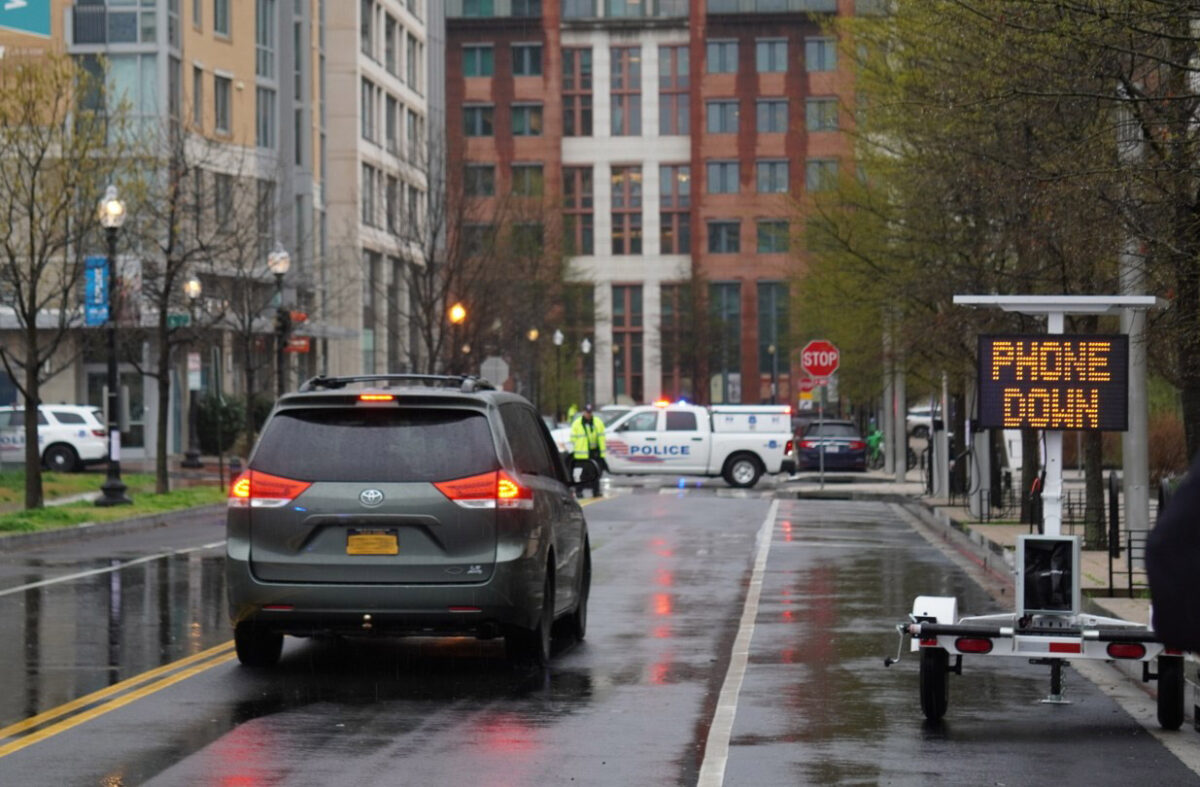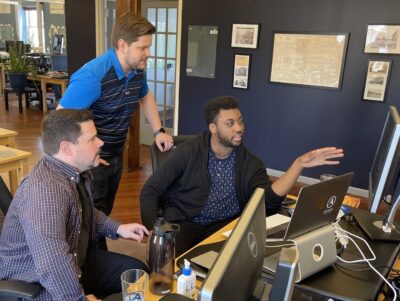
The Tech Behind is a Technical.ly series in which we explore the technology that powers notable institutions. Have an idea for our next edition? Tell us.
There’s no question that people use their cell phones too much while driving. Now, a district agency is using new tech to try and get motorists’ attention off their phones and on the road.
The city has deployed a new traffic safety device, called the SmartSign, that senses if drivers are on their phones, not wearing a seatbelt or driving too fast. The signs, which are attached to a mobile trailer unit, tell drivers to put their phones down, buckle up or slow down, said Rick Birt, the director of the DC Highway Safety Office. They’re similar to signs that display speed.
“The goal of these trailers is to provide instantaneous feedback to motorists so that they have that opportunity to make a better choice,” Birt said.
DC partnered with SaferStreet Solutions, the creator of the SmartSign, to deploy the new technology. This effort takes place through a partnership between the DC Highway Safety Office, the DC Department of Transportation and the Metropolitan Police Department.
Tim Hogan, the Seattle-based founder of SaferStreet, said it took about four years to build the technology. The SmartSign is being used in North Dakota and Washington state, and there are plans to use it in other jurisdictions later this year, Hogan said.
For Hogan, this is all about changing behaviors, not so much the technology itself.
“At the end of the day, it’s about the impact that we’re making,” Hogan said, “and how we’re applying the technology to make the difference that really matters.”
There are two devices involved, Hogan explained: the sensor that detects the behavior and the sign itself. The sensor is a short distance ahead of the trailer, which can detect if a driver is holding their cell phone or not wearing a seatbelt using infrared technology.
For tracking cell phone use, people won’t get the message if the phone is in a cradle or elsewhere in the car. But if it’s in the person’s hand, the driver will get a notification.
The messages displayed on the sign are triaged, Birt said. Right now, the first message will be to put the phone down, the second to buckle up and the third to slow down.
People will not receive tickets or citations when the sign displays a message, Birt said. Also, there are no cameras, so no personal data or information will be collected, he said.
The agency does, however, collect basic data on how many cars drive by and the number of infractions the sensors detect. This is done “to better understand the size and size and scope of the problem of distracted driving,” Birt said.
Signs are being placed where there are repeated traffic fatalities or serious injuries, Birt said. Right now, two trailers will be placed along Georgie Avenue in Northwest and Benning Road in Northeast. Down the line, depending on how successful these signs are, more will be deployed.
“The goal here is to, again, use this as an opportunity to start a conversation, keep the public engaged, make the public aware,” Birt said. “And then, again, get people to put their phones down and focus on the art and science of driving.”
Before you go...
Please consider supporting Technical.ly to keep our independent journalism strong. Unlike most business-focused media outlets, we don’t have a paywall. Instead, we count on your personal and organizational support.
3 ways to support our work:- Contribute to the Journalism Fund. Charitable giving ensures our information remains free and accessible for residents to discover workforce programs and entrepreneurship pathways. This includes philanthropic grants and individual tax-deductible donations from readers like you.
- Use our Preferred Partners. Our directory of vetted providers offers high-quality recommendations for services our readers need, and each referral supports our journalism.
- Use our services. If you need entrepreneurs and tech leaders to buy your services, are seeking technologists to hire or want more professionals to know about your ecosystem, Technical.ly has the biggest and most engaged audience in the mid-Atlantic. We help companies tell their stories and answer big questions to meet and serve our community.
Join the conversation!
Find news, events, jobs and people who share your interests on Technical.ly's open community Slack







